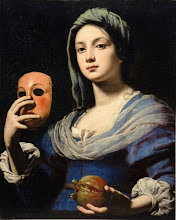There is often confusion amongst practitioners of yoga over the qualities of the "2nd" and "3rd" chakras of the subtle body.
The Swadisthana Chakra, corresponds to the colour yellow/orange and the fire element, while the 3rd Chakra, the Nabhi (Navel centre) corresponds to the colour green and the water element. However, you often see contemporary chakra charts where the reverse is indicated.
I feel that the confusion has arisen because the Swadisthana Chakra actually orbits the Nabhi Chakra. So perhaps they should not necessarily be thought of in numerical order. Sometimes the Swadisthana is located in the 2nd position, and sometimes in the third, depending on where it is in its revolution.
It makes sense, though, to think of the Swadisthan as the 2nd Chakra, as it represents creation, the phase of existence preceding the evolutionary stage. The stage of evolution/preservation is at the Nabhi level (3rd centre) with its 10 Avatars or incarnations of Vishnu in progressively higher forms from fish to man.
Traditional depictions of the Hindu god Vishnu reclining on the cosmic ocean (see illustration) help us to properly understand the nature of these two closely connected chakras.
Lord Vishnu presides over the Nabhi Chakra, through which he and his consort Shri Lakshmi sustain the body at its centre, the navel level. He is shown reclining on a green cosmic ocean, and with greenish skin. There is a clear connection with the water element.
Lord Brahma, god of creation, sits on a lotus (chakra) growing from Lord Vishnu's navel. This is symbolic of the creative Swadisthana chakra orbiting the Nabhi chakra as a sub-chakra satellite.
In Indian mythology, as all over the world, creativity is associated with the fire element, which is yellow/orange.
In Hindu culture Shri LakshmiVishnu is the aspect of the Divine who provides wealth. Shri Lakshmi is often depicted dispensing gold coins. Perhaps this is why the Nabhi often is associated with gold or yellow.
The Nabhi Chakra (also called the Manipura - City of Gems) manifests physically as the solar plexus. According to Wikipedia, the solar plexus is so called because its many radiating nerves resemble the sun. This may be the reason that the Nabhi chakra is associated with the fire element in some systems - the sun being fiery.
Ultimately the qualities of the chakras, and the aspects of the Divine which govern them, are closely allied anyway, and best experienced for oneself through thoughtless meditation, rather than argued over on a mental level.
.jpg&container=blogger&gadget=a&rewriteMime=image%2F*)







